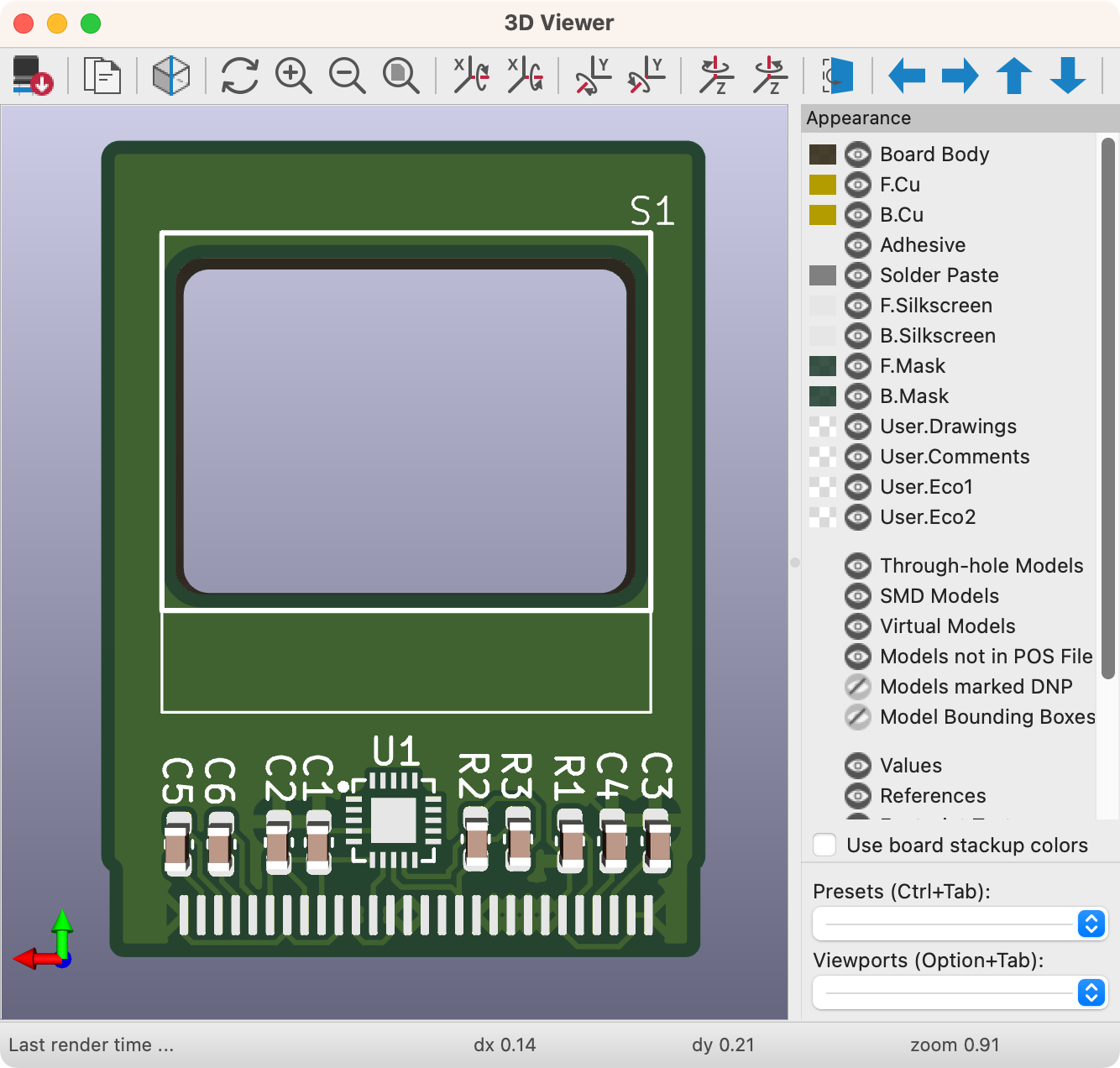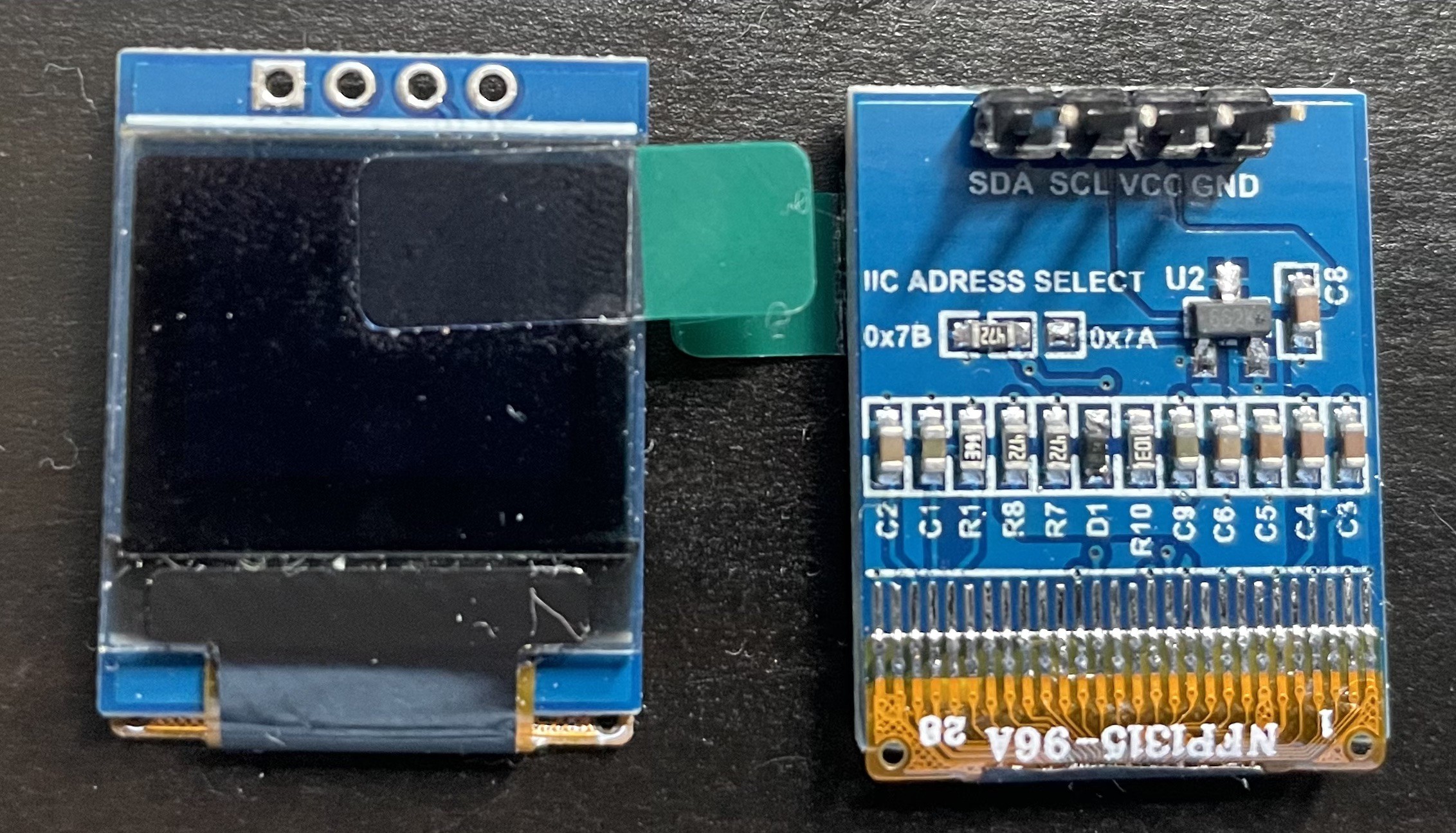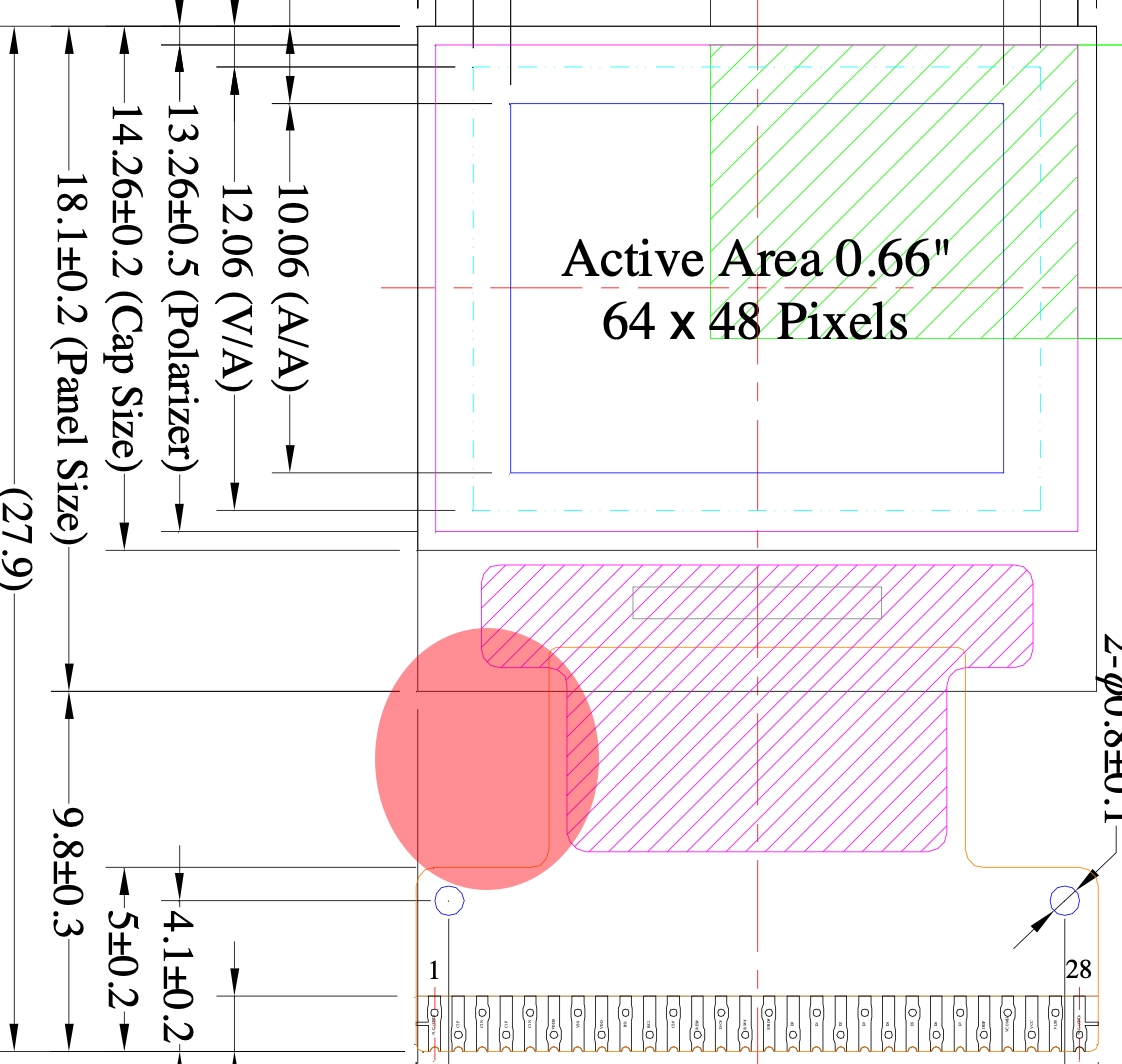I mentioned in a previous log that one of the things that kicked this off for me was the availability of an OLED display that was the right aspect ratio. This display is also quite small, and given the amount of space I have to keep everything to scale, I don't have much room to put other components.

This render of my current version of the board shows the display outline where it would sit on the board. my current plan is to fix it in place with some hot glue. The trick is in connecting the ribbon cable. According to the datasheet, it's 9.8mm from the bottom of the display (the shorter rectangle at the bottom of the cutout) to the end of the ribbon, with a 1.5mm long solderable contact. In most situations, you would fold this under the display or around the back of a PCB where all the support circuitry is.

I could make a second PCB as a sort-of "backpack" for my board. In fact, I may need to do something like that anyway. One thing I'm missing from my current version is a means of actually plugging in my SAO to an SAO Header. An SAO without the header is just a weird PCB. I could probably rearrange some of the components but the ribbon cable is getting in the way.
One solution would be to try to utilize the cutout that exists in the ribbon as it makes a sort-of "I-beam" shape. The space provided here is very narrow: Just 4mm. If you known= your common unit conversions for electronics, you'll know that the 4-pin header for the SAO needs at least 2.54mm (0.1 inches) between pins. It's a tight fit. Additionally, because I'm trying to squeeze some components under there I'm thinking about flexing the ribbon cable a bit, which means that that space will be even narrower.

I'm inclined to think that the backpack idea is better than trying to shove everything onto a single board, but it also feels like that maybe goes against the spirit of the SAO.
SAOs were the result of manufacturing costs getting so low that you could make an electronics art project for the cost of a cup of fancy coffee. Now that chips, PCBs and components are all shockingly inexpensive, are we entering the era of the FAO? The Fancy Add-On?
 Aaron
Aaron
Discussions
Become a Hackaday.io Member
Create an account to leave a comment. Already have an account? Log In.